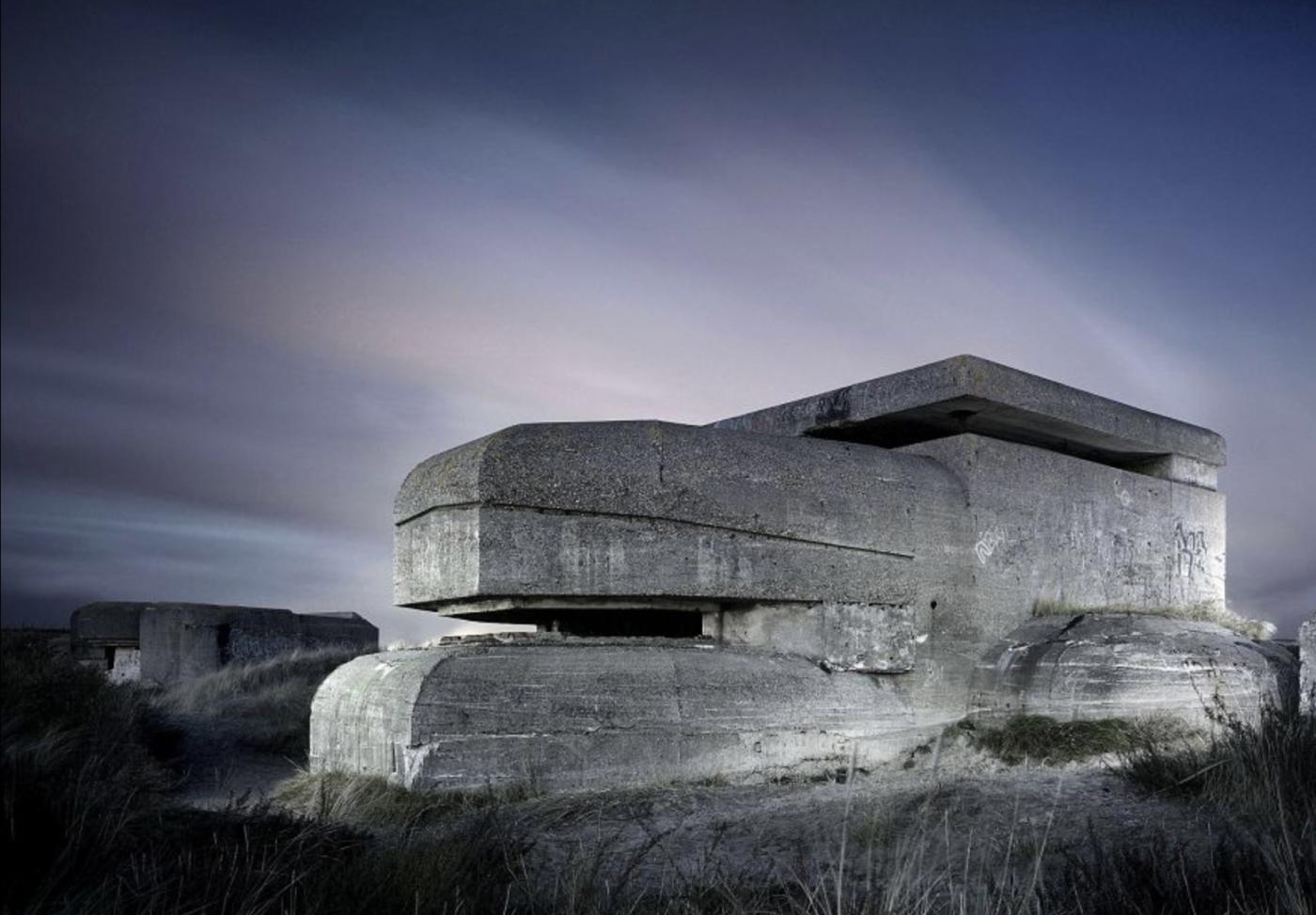
Atlantic wall sea defence bunkers
The Atlantic Wall was a significant system of coastal fortifications developed by Nazi Germany during World War II to prevent an Allied invasion. Spanning from Norway in the north to the border between France and Spain in the south, it covered thousands of kilometers of coastline. The fortifications were designed to halt or slow an amphibious assault, particularly focusing on the anticipated Normandy invasion, known as Operation Overlord, launched in June 1944. Lets explore the construction, structure, and strategic importance of the Atlantic Wall, examining how it reflected Germany’s military strategy and the broader challenges of the war.
Development and Construction
Construction of the Atlantic Wall began in 1942 when Nazi Germany, having established control over much of Western Europe, anticipated an Allied invasion. The need for a coastal defense system became evident after the failure of the British raid on Dieppe in 1942, which highlighted the vulnerability of the coastline to amphibious attacks. Adolf Hitler, advised by his military commanders, ordered the fortification of the western European coastline to prepare for a potential Allied invasion.
Initial construction efforts began under the Organisation Todt, a paramilitary engineering group, and by 1943, these efforts expanded significantly. The Atlantic Wall was not a single, continuous defense line but a network of fortifications spread across several countries. It included bunkers, gun emplacements, minefields, barbed wire, anti-tank obstacles, and coastal artillery, with the degree of sophistication varying by location. The primary objective was to deter the Allies and disrupt any attempt at an invasion.
A key aspect of the wall was its reliance on local geography. In many locations, the natural terrain—such as cliffs, rocky beaches, and marshes—was incorporated into the defenses, creating a more integrated and difficult obstacle for invaders. However, the quality of the defenses varied greatly, as construction priorities shifted according to perceived threats and available resources. Some areas, like Normandy, received the heaviest fortifications, while more remote stretches of coastline were less fortified.
The Structure of the Atlantic Wall
The Atlantic Wall was not a single unified structure but rather a series of layered defenses designed to delay or disrupt an assault at various stages. The first layer consisted of beach obstacles intended to hinder landing craft and infantry. These included physical barriers such as concrete and steel "hedgehogs," anti-landing craft barriers, and submerged obstacles designed to damage or capsize landing vessels. Barbed wire was also widely used to impede movement, especially at low tide when landing craft would attempt to reach the shore.
The second layer consisted of coastal artillery positions and bunkers designed to protect the beaches and engage enemy vessels. These fortifications typically housed large caliber guns capable of firing on targets several kilometers out to sea. Many of the guns were placed in concrete bunkers called "Stützpunkte" (strongpoints), which were designed to withstand bombardment while providing both firepower and protection.
Inland, the third layer included anti-tank obstacles and minefields. The Germans used a variety of land mines, from those intended to disable tanks to those meant to inflict casualties on infantry. Anti-tank ditches were dug in many places, and steel "dragons' teeth"—large concrete blocks—were placed along roads and paths to deter the movement of armored vehicles.
Finally, the fortifications included communication networks, barracks for troops, and air defense installations. The air defense system was particularly vital in areas anticipated to be subjected to heavy Allied air raids. Radar stations and anti-aircraft guns were positioned to protect vital locations, such as bridges and command centers, from aerial attacks.
Strategic Significance
The primary strategic role of the Atlantic Wall was to serve as the main defense against an Allied invasion. Throughout much of the war, the German high command believed that the Allies would attempt to land in France or the Low Countries, seeking to open a second front that would relieve pressure on the Soviet Union and hasten the defeat of Germany. The Atlantic Wall was a direct response to this expectation.
The wall's purpose was threefold: to deter any potential invasion, to slow down any advancing forces and buy time for reinforcements, and to make the best use of Germany's limited military resources. The Germans expected the wall to be a formidable obstacle to any invading army, and much of their military planning was based on this belief.
However, the Atlantic Wall had notable weaknesses. In certain areas, the fortifications were incomplete or poorly constructed due to shortages of materials and labor. Furthermore, the German military’s overconfidence in the wall’s effectiveness proved to be a critical flaw. When the Allies launched Operation Overlord—the Normandy landings—in June 1944, they breached the defenses of the Atlantic Wall. While the wall was a significant obstacle, it was not impenetrable.
The Role of the Atlantic Wall in the Normandy Invasion
The Atlantic Wall played a central role in the planning and execution of Operation Overlord, the largest amphibious invasion in history. Allied planners spent months analysing the wall’s vulnerabilities and were fully aware of the challenges posed by the German defenses.
When the Allies landed in Normandy on June 6, 1944, they encountered a well-fortified German defense, but it was not as formidable as expected. Several factors contributed to this: Allied deception strategies misled the Germans about the location of the main invasion, diverting some forces away from Normandy. The sheer scale of the invasion—thousands of ships, planes, and landing craft—overwhelmed the German defenses, many of which were manned by inexperienced or poorly trained troops. Additionally, the pre-invasion bombing campaign weakened many of the coastal fortifications, and by the time the Allies launched their attack, the Germans were unable to mount an effective response.
The defense of the Atlantic Wall in Normandy was further undermined by internal divisions within the German military. General Erwin Rommel, responsible for overseeing the defenses, advocated for a more flexible defense strategy, while Hitler insisted on a more static approach. This disagreement led to delays in the German response, contributing to the success of the Allied landings. Ultimately, the Allies breached the Atlantic Wall, and the fall of Normandy marked the beginning of the liberation of Western Europe.
Please look at Places to visit and we list some museums based around this bunker system.










